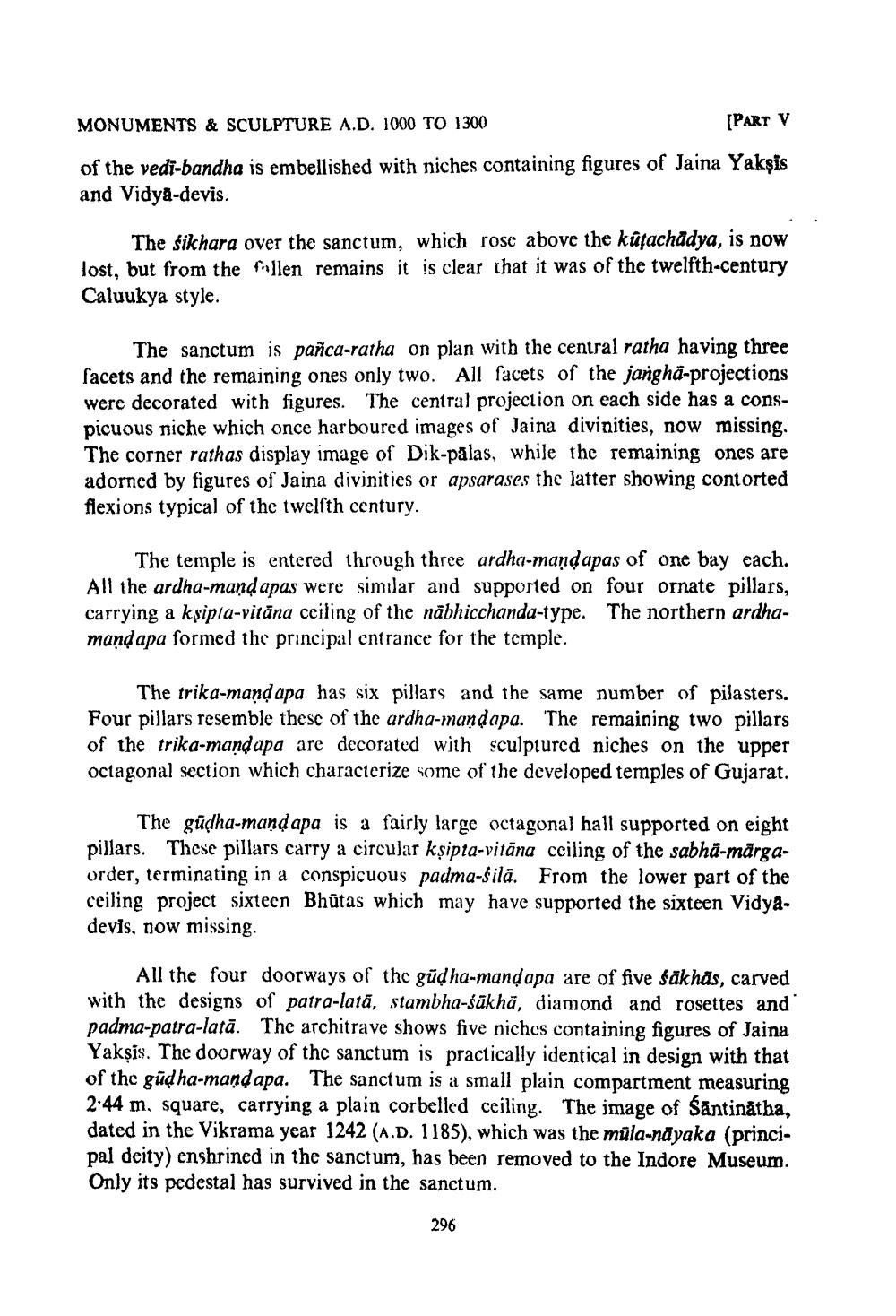________________
MONUMENTS & SCULPTURE A.D. 1000 TO 1300
[PART V
of the vedi-bandha is embellished with niches containing figures of Jaina Yaksis and Vidya-devis.
The sikhara over the sanctum, which rose above the kūtachadya, is now Tost, but from the fallen remains it is clear that it was of the twelfth-century Caluukya style.
The sanctum is panca-ratha on plan with the central ratha having three facets and the remaining ones only two. All facets of the jangha-projections were decorated with figures. The central projection on each side has a conspicuous niche which once harboured images of Jaina divinities, now missing. The corner rathas display image of Dik-palas, while the remaining ones are adorned by figures of Jaina divinities or apsarases the latter showing contorted flexions typical of the twelfth century.
The temple is entered through three urdha-mandapas of one bay cach. All the ardha-mand apas were similar and supported on four ornate pillars, carrying a kşipla-vitāna ceiling of the näbhicchanda-type. The northern ardhamand apa formed the principal entrance for the temple.
The trika-mand apa has six pillars and the same number of pilasters. Four pillars resemble these of the ardha-mandapa. The remaining two pillars of the trika-mandapa are decorated with sculptured niches on the upper octagonal section which characterize some of the developed temples of Gujarat.
The gudha-mand apa is a fairly large octagonal hall supported on eight pillars. These pillars carry a circular kşipta-vitāna ceiling of the sabhä-märgaorder, terminating in a conspicuous padma-šilā. From the lower part of the ceiling project sixteen Bhūtas which may have supported the sixteen Vidyadevis, now missing.
All the four doorways of the gūdha-mandapa are of five säkhäs, carved with the designs of patra-latā, stambha-śākhā, diamond and rosettes and padma-patra-latā. The architrave shows five niches containing figures of Jaina Yaksis. The doorway of the sanctum is practically identical in design with that of the güd ha-mand apa. The sanctum is a small plain compartment measuring 2.44 m, square, carrying a plain corbelled ceiling. The image of Säntinätha, dated in the Vikrama year 1242 (A.D. 1185), which was the mula-näyaka (principal deity) enshrined in the sanctum, has been removed to the Indore Museum. Only its pedestal has survived in the sanctum.
296




